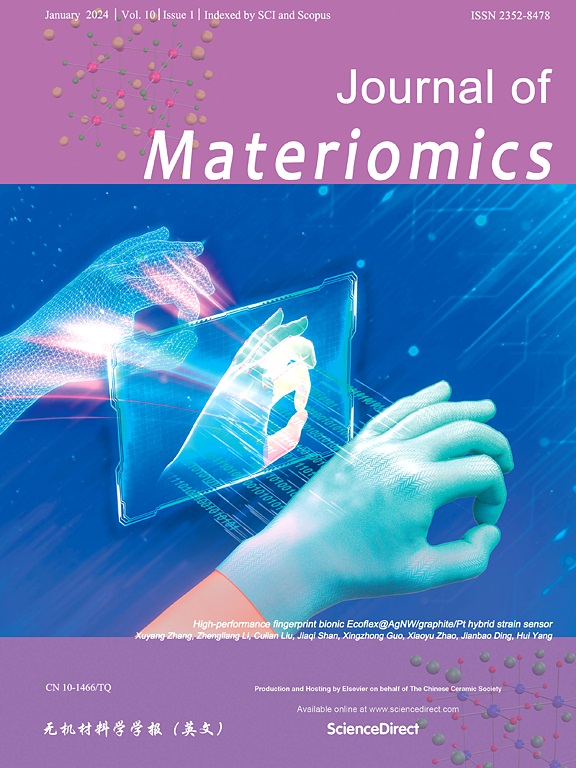Superposition of bulk and interface electric field for boosting charge transfer in Bi2MoO6/Bi19Br3S27 S-scheme heterojunctions
IF 9.6
1区 材料科学
Q1 CHEMISTRY, PHYSICAL
引用次数: 0
Abstract
Coupling bulk and interface electric field for enhancing photogenerated charge carrier separation represents an effective strategy toward enhancing photocatalytic performance due to the potential of superposition of electric field. However, the detailed mechanism of synergistic effect of the bulk and interface electric field in facilitating photogenerated charge carrier remains underexplored, limiting its wide applications. Herein, we integrate the bulk electric field of Bi2MoO6 (BMO) with interface electric field (IEF) of S-scheme heterojunction formed between BMO and Bi19Br3S27 (BBS) for enhancing photocatalytic performance. The two electric fields can not only superimpose for amplifying electric field strengths, but also act as the funnel for guiding photogenerated charge carrier migration towards specific regions for redox reactions. Moreover, the Mo![]() S bonds formed between BMO and BBS act as a channel for charge transfer, accelerating the charge transfer of the S-scheme and achieving effective charge separation. As a proof-of-concept, we employ optimized BMO/BBS S-scheme heterojunction for photocatalytic CO2 conversion, reaching about 32.4 times and 2.0 times to that of pristine BMO and unmodulated BMO/BBS for CO production. This method of promoting the IEF by coupling bulk and interface electric field provides new insights into the construction of S-scheme heterojunctions for photocatalysis.
S bonds formed between BMO and BBS act as a channel for charge transfer, accelerating the charge transfer of the S-scheme and achieving effective charge separation. As a proof-of-concept, we employ optimized BMO/BBS S-scheme heterojunction for photocatalytic CO2 conversion, reaching about 32.4 times and 2.0 times to that of pristine BMO and unmodulated BMO/BBS for CO production. This method of promoting the IEF by coupling bulk and interface electric field provides new insights into the construction of S-scheme heterojunctions for photocatalysis.


Bi2MoO6/Bi19Br3S27 S-scheme异质结体电场与界面电场叠加促进电荷转移
由于电场叠加的潜力,耦合体电场和界面电场增强光生载流子分离是提高光催化性能的有效策略。然而,体电场和界面电场协同作用促进光生载流子的具体机制尚未深入研究,限制了其广泛应用。在此,我们将Bi2MoO6 (BMO)的体电场与BMO与Bi19Br3S27 (BBS)之间形成的S-scheme异质结的界面电场(IEF)集成在一起,以增强光催化性能。这两个电场不仅可以叠加放大电场强度,还可以作为引导光生电荷载流子向特定区域迁移进行氧化还原反应的漏斗。此外,BMO和BBS之间形成的Mo-S键作为电荷转移的通道,加速了S-scheme的电荷转移,实现了有效的电荷分离。作为概念验证,我们利用优化后的BMO/BBS S-scheme异质结进行光催化CO2转化,分别达到原始BMO和未调制BMO/BBS光催化CO2转化的32.4倍和2.0倍。这种通过耦合体和界面电场促进IEF的方法为构建用于光催化的s型异质结提供了新的见解。
本文章由计算机程序翻译,如有差异,请以英文原文为准。
求助全文
约1分钟内获得全文
求助全文
来源期刊

Journal of Materiomics
Materials Science-Metals and Alloys
CiteScore
14.30
自引率
6.40%
发文量
331
审稿时长
37 days
期刊介绍:
The Journal of Materiomics is a peer-reviewed open-access journal that aims to serve as a forum for the continuous dissemination of research within the field of materials science. It particularly emphasizes systematic studies on the relationships between composition, processing, structure, property, and performance of advanced materials. The journal is supported by the Chinese Ceramic Society and is indexed in SCIE and Scopus. It is commonly referred to as J Materiomics.
 求助内容:
求助内容: 应助结果提醒方式:
应助结果提醒方式:


